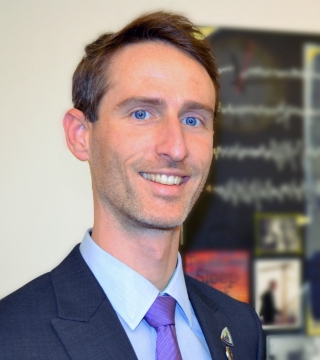Takeaway
Give yourself enough sleep to retain new learning, give better patient care, and help prevent burnout!

Lifelong Learning in Clinical Excellence | November 27, 2018 | 3 min read
By Logan Schneider, MD, Stanford Medicine
Sleep on it
Sage advice that echoes through the generations, and is essential for deep learning. There are different types of learning – some of it involves archiving important information for the long term, some of it involves hashing out complex scenarios that may not have just one solution, and some of it involves intentional forgetting.
We’ve all heard that it’s better to sleep the night before an exam instead of staying up to cram, but why is that the case? Our brains use the complex interplay of a downscaling homeostatic plasticity and a reinforcing Hebbian plasticity to wake us up with new perspectives and insights, an open mind that is ready to receive new knowledge, and a mental flexibility to tackle novel problems.
Sleep immediately after learning is best for consolidation
By allowing our brains to properly store and network memories from the day, we’re ensuring that what we learned is not only retained, but has appropriate relevance. Sleep-related consolidation of information works well with naps immediately after knowledge acquisition. Given the volume of information that we – and especially our trainees – are required to digest every day, a 20-to-30-minute power nap can help to stabilize the learning from the first half of our day, as well as prepare our minds for the second half of the day.
Sleep helps regulate your emotional state
And to solve complex problems. These tend to be iterated through the brain retracing scenarios in dream (rapid eye movement – REM) sleep. REM sleep predominates in the latter half of the night, and is the sleep stage most strongly associated with mental well-being. If we cut our nocturnal sleep short, we’re missing out on much of this critical aspect of sleep.
Better sleep is associated with lower rates of burnout
Better-rested, more emotionally balanced physicians may have more collegial interactions with colleagues, and more empathetic connections with patients. Additionally, providing our brains with the time needed to rest can ensure that the ever-expanding scope of medical knowledge that we encounter every day is not only remembered, but is catalogued correctly for effective application in the future. Thus, getting enough sleep has been associated with a lower risk of burnout. So, just like pain exists to tell us that something is wrong, so do sleepiness, fatigue, and weariness. Rather than just caffeinating the symptoms, maybe it’s time we listened to them.
How to make it work for you
It starts with protecting your time to sleep at night. How much sleep you need to wake feeling refreshed is a personal thing, so figure out how much sleep you need when you’re on vacation for at least one week. From there, set your normal weekly schedule to prioritize enough sleep every night, preceded by a wind-down buffer zone of at least one hour of non-engaging, screen-free time in low ambient light.
How to fit in a nap
If night isn’t meeting your needs and you’re dragging through the day, pushing through that after-lunch slump, try a quick 20-to-30-minute nap instead of reaching for another cup of coffee.
Find a quiet, safe place (call rooms abound!) and turn off interruptive tech (where possible). Set an alarm, because the closer you get to a phase of slow-wave sleep the harder it will be to wake up, and the more likely it is that you will come out “sleep drunk.” If you find that your naps are verging on slow-wave sleep, then cut them shorter by five or ten minutes. And even if you don’t think you fell asleep, a resting mind or a brief session of meditation can still help you feel better for the rest of the day.
With enough sleep, you’ll get more out of all those hours you spend awake, give better patient care, and help prevent burnout.

